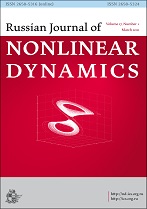|
This article is cited in 2 scientific papers (total in 2 papers)
Nonlinear engineering and robotics
Stiffness Modeling of a Double Pantograph
Transmission System: Comparison of VJM and MSA
Approaches
W. K. Shakera, A. Klimchikb
a Robotics and Computer Vision program, Innopolis University,
ul. Universitetskaya 1, Innopolis, Republic of Tatarstan, 420500 Russia
b School of Computer Science, University of Lincoln,
Brayford Way, Brayford Pool, Lincoln LN6 7TS, United Kingdom
Abstract:
This paper deals with the stiffness modeling of the double pantograph transmission system.
The main focus is on the comparison analysis of different stiffness modeling approaches: vir-
tual joint modeling (VJM) and matrix structural analysis (MSA). The aim of this work is to
investigate the limitations of the considered approaches. To address this issue, corresponding
MSA-based and VJM-based stiffness models were derived. To evaluate the deflections of the end
effector, the external loads were applied in different directions at multiple points in the robot
workspace. The computational cost and the difference in end-effector deflections were studied
and compared. MSA was found to be 2 times faster than VJM for this structure. The re-
sults obtained showed that the MSA approach is more appropriate for the double pantograph
mechanism.
Keywords:
stiffness modeling, parallel robot, double pantograph, virtual joint modeling,
matrix structural analysis.
Received: 08.09.2022
Accepted: 18.11.2022
Citation:
W. K. Shaker, A. Klimchik, “Stiffness Modeling of a Double Pantograph
Transmission System: Comparison of VJM and MSA
Approaches”, Rus. J. Nonlin. Dyn., 18:5 (2022), 771–785
Linking options:
https://www.mathnet.ru/eng/nd823 https://www.mathnet.ru/eng/nd/v18/i5/p771
|

| Statistics & downloads: |
| Abstract page: | 76 | | Full-text PDF : | 46 | | References: | 28 |
|




 Contact us:
Contact us: Terms of Use
Terms of Use
 Registration to the website
Registration to the website Logotypes
Logotypes








 Citation in format
Citation in format 
